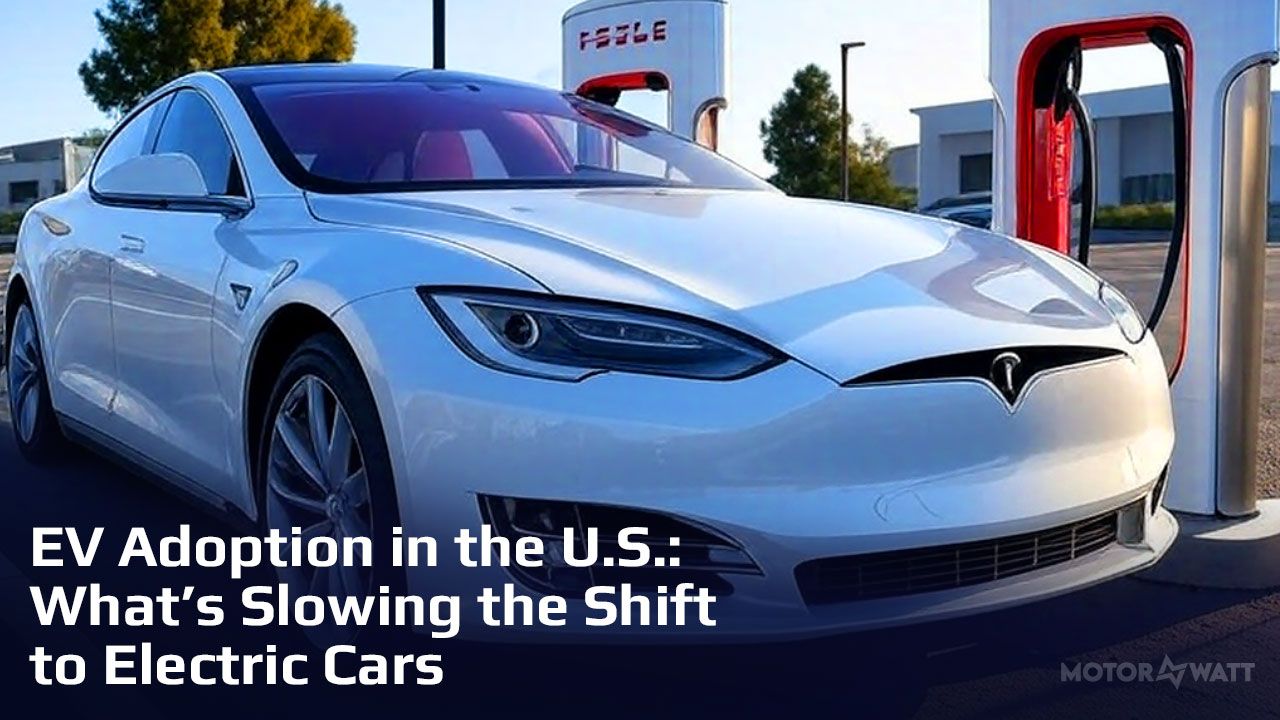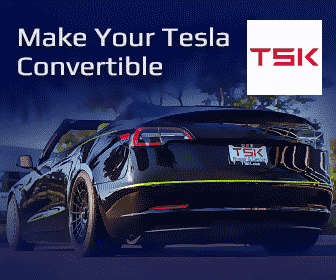EV Adoption in the U.S.: What’s Slowing the Shift to Electric Cars
Share this article in Social Media:

What is EV Adoption?
EV adoption describes how quickly electric vehicles are replacing gas-powered cars in the U.S. From 2020 to 2023, it looked like the EV wave was coming in fast—sales jumped from 2% to 7.6% of all new cars. But here in 2025, things have plateaued. April numbers show EVs still hold just 8.1% of market share. Automakers like Ford are watching EV sales like the F-150 Lightning drop 17%, while the Mustang Mach-E plunged by 40%. Even Tesla, the golden child of EVs, saw sales dip 10% in February. What’s going on? Turns out, mainstream buyers aren’t sold yet—and not just because of range anxiety.
EV Affordability Issues
The elephant in the garage? Price. The average EV in April 2025 costs $59,000—over $11,000 more than the average gas-powered car. And affordable EVs are rare: only 3% of them sell for under $37,000. Compare that to hybrids and gas cars, where half the market sits in that lower price tier. Tesla tried to kick off a price war in 2024, slashing $2,000 off its lineup. But Ford and Lucid aren’t winning the budget game. The Inflation Reduction Act’s $7,500 tax credit helped some buyers—until stricter rules in 2023 whittled down eligible models. So if you’re middle class, EVs still feel like a stretch.
Charging Infrastructure in 2025
Even if you can afford an EV, where do you juice it up? That’s still a pain point. The U.S. had about 51,373 fast-charging ports as of February 2025—up from 25,000 in 2022—but coverage is hit or miss. Suburbs and rural stretches? Good luck. Even when you find one, it might be broken, out of order, or a hassle to pay for. The Trump administration’s pause on NEVI funding could slow the goal of 500,000 chargers by 2030. Tesla’s Supercharger network is still the gold standard, now open to Ford, GM, and Rivian drivers. But most Americans still compare EV charging to the speed and ease of pumping gas—and that’s a tough bar to clear.
Automakers Shift Gears on EV Plans
Ford took a breather from making F-150 Lightnings from November 2024 to January 2025. BMW hit pause on its EV line in May. Volkswagen held back on the ID.4. Even GM, once proud of its Chevrolet Bolt, had to reboot its strategy for 2025 with cheaper lithium iron phosphate batteries. Automakers are reading the room—and pivoting. Many are doubling down on hybrids, which saw a 16% market share jump from 2023 to 2024. The message? EVs aren’t a guaranteed bet. At least not yet. With sales lagging and inventories piling up—Ford had 83 days of unsold Mach-Es in 2023—they’re hedging.
Policy Rollercoaster and Public Reaction
Political winds have shifted. The Trump administration wants to axe the $7,500 federal tax credit and has floated a $250 annual EV fee. Meanwhile, Congress blocked California’s gas-car ban, which 11 states had adopted. On X, you’ll find two camps: one defending “freedom of choice,” the other mourning a setback for climate goals. Biden’s NEVI program and IRA tax breaks helped push EV adoption to 1.4 million units in 2023—a 40% rise from 2022. But with new uncertainty, consumers are hesitating. If you’re not sure if tax credits will be there next year, why take the plunge?
Bright Spots in the EV Market
It’s not all doom and gloom. The U.S. added roughly 1,000 new chargers every week in 2024. Battery costs are expected to fall over 50% by 2050, with some projections placing price parity between EVs and ICE vehicles around 2028–2029. New affordable entries like the Chevrolet Bolt reboot and Honda Prologue (which moved 33,000 units in 2024) are starting to hit driveways. According to Cox Automotive, EV market share could tick up to 10% by the end of 2025. Globally, China’s already at 50%—a blueprint that suggests the U.S. has room to grow if it can just get the basics right: price, charging, and consumer trust.
Conclusion
EV Adoption isn’t dead—but it’s at a crossroads. For the electric vehicle market in the U.S. to move beyond early adopters and truly go mainstream, automakers and policymakers alike need to double down on affordability, stable incentives, and charging access. Without those pillars, EVs risk stalling out just before the finish line.











